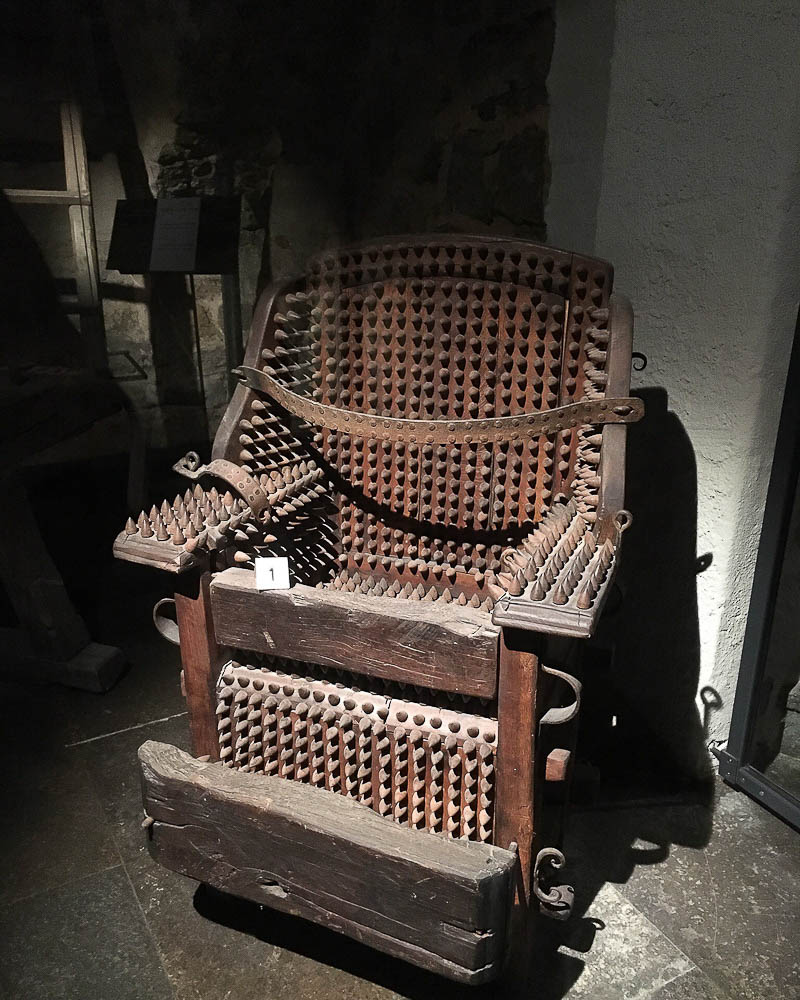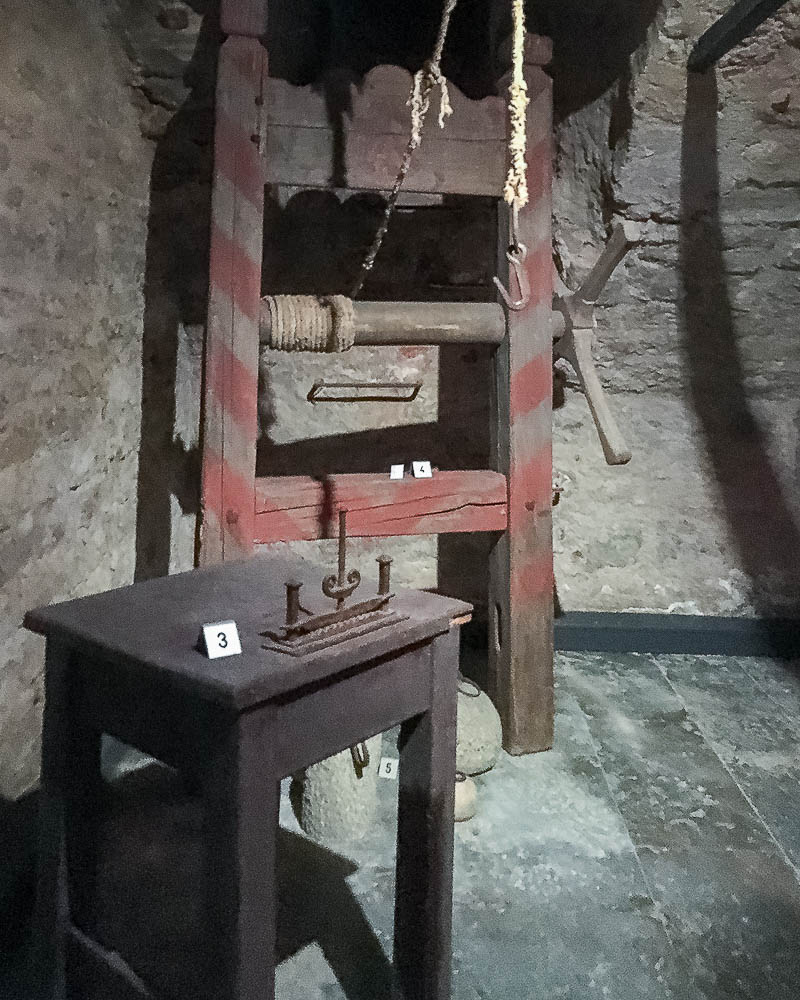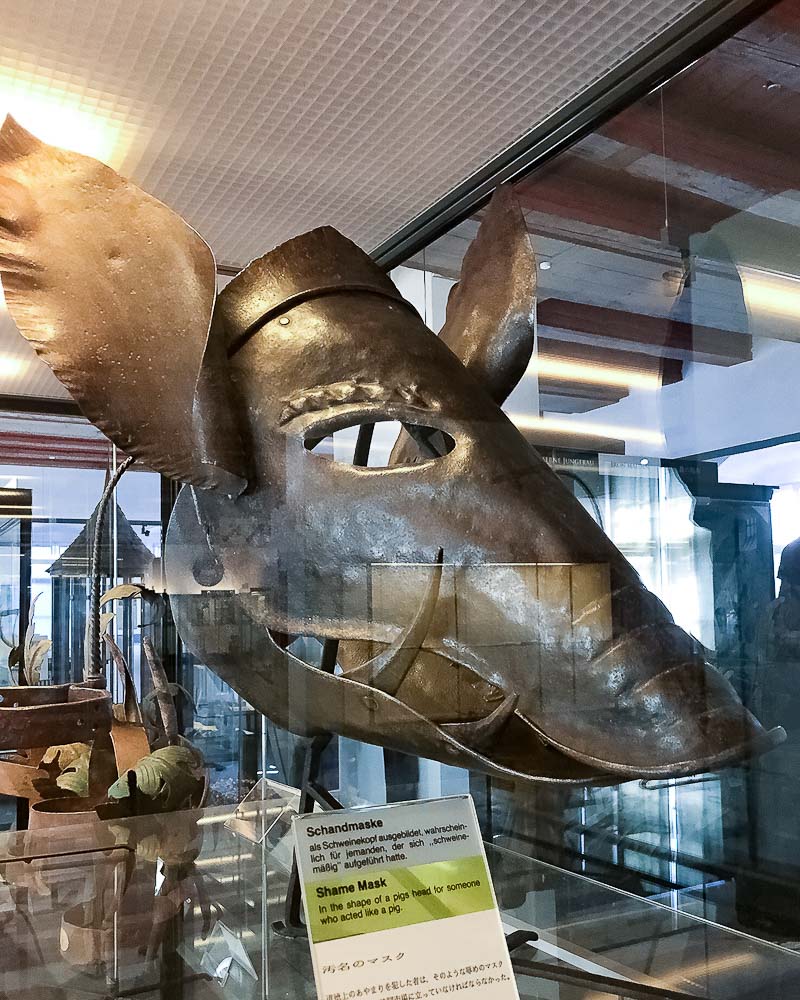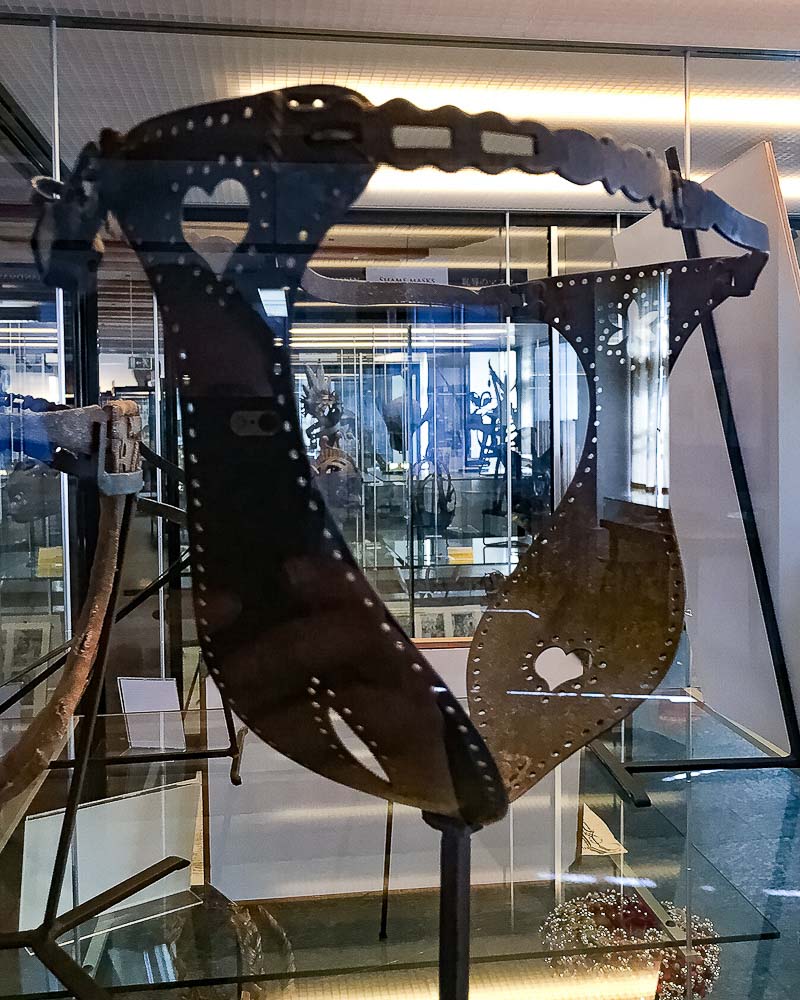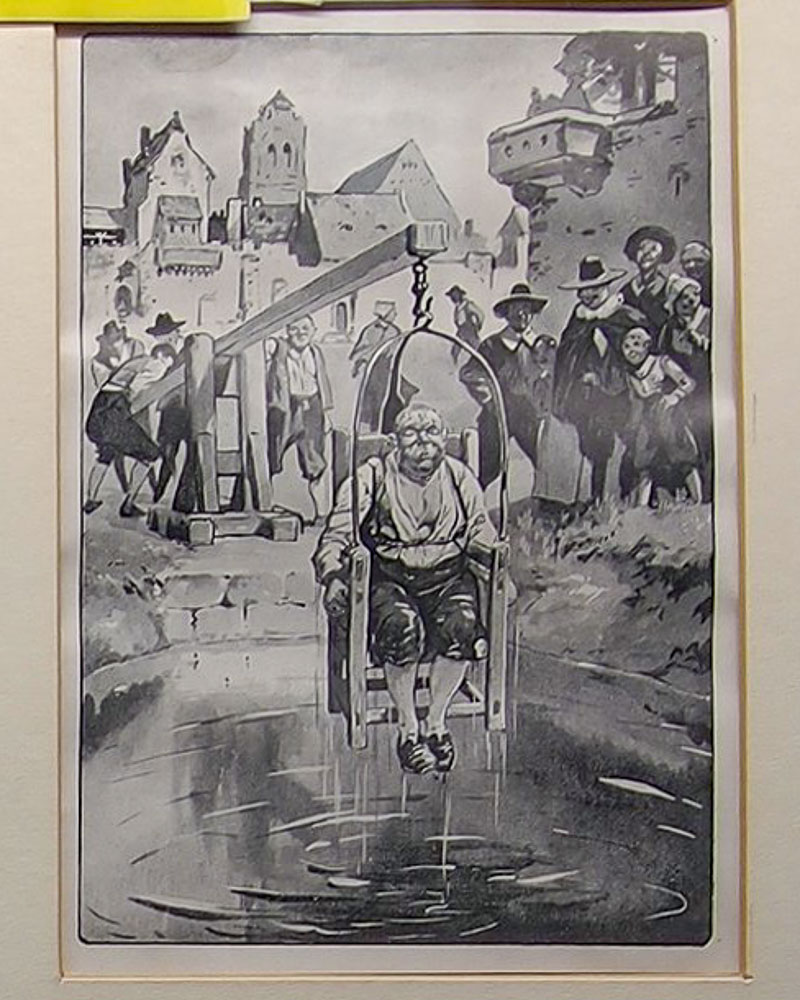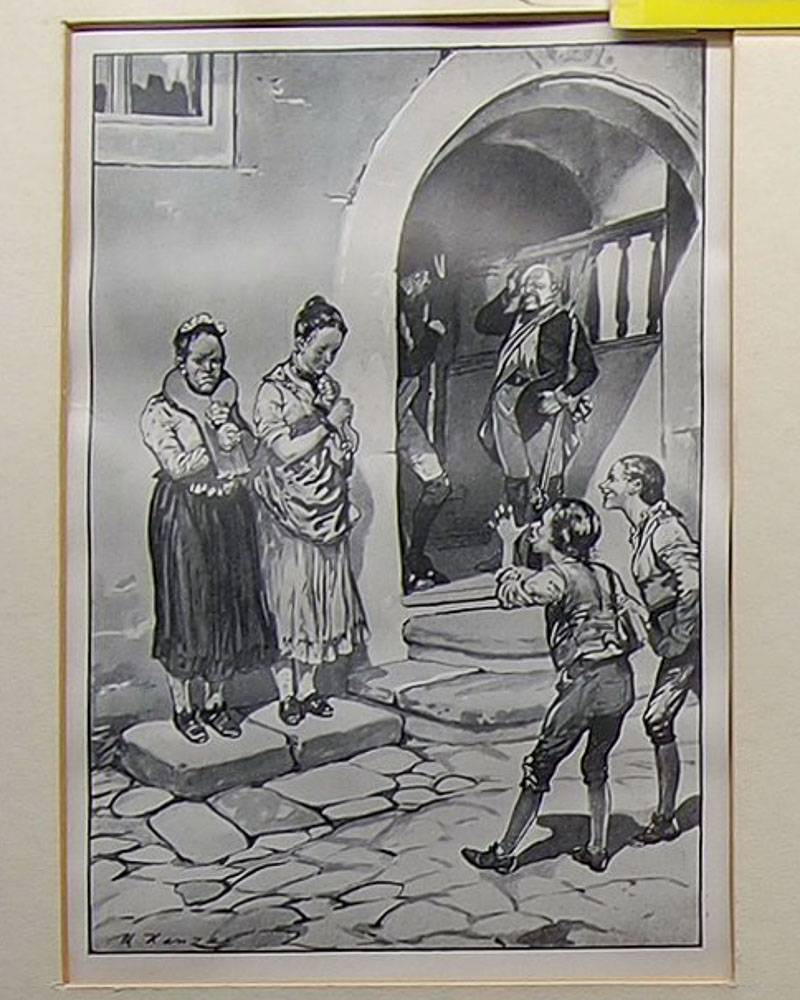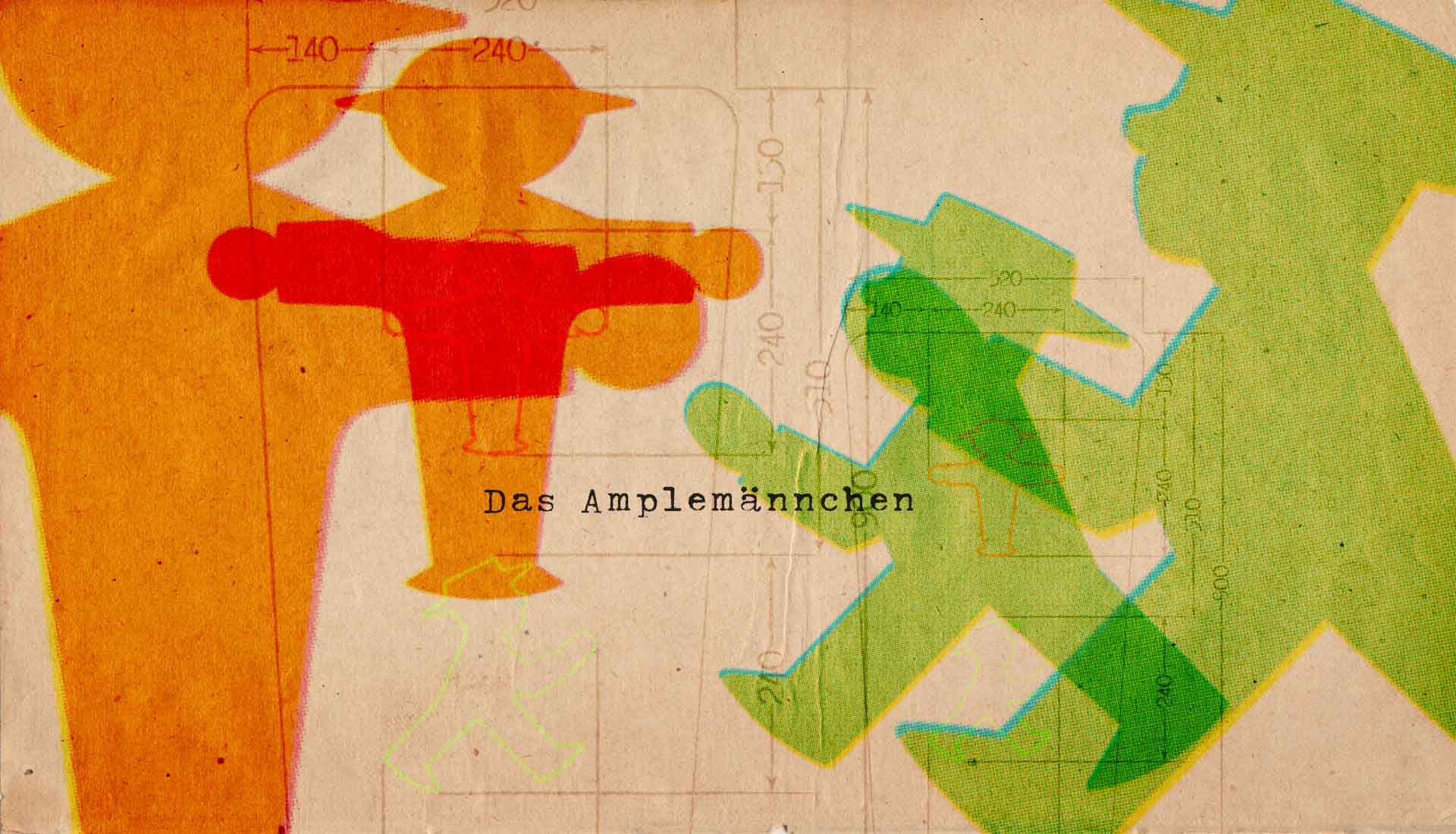y final stop in Rothenburg is the Medieval Crime Museum located in the former St. John’s Commandery in Rothenburg which was built between 1393 and 1410 together with the neighboring St. John’s Church. In 1718, the building was converted into the baroque style which marks the building’s architecture today. During the period of secularization, the building was transferred to Bavaria. In 1972, the house was no longer needed as an administration building and was bought by the museum's founder’s family and restored. The museum moved to the building in 1977.
It is the only museum in the Federal Republic, with this collection area. In the building of the former Commandery of the Order of St. John, built in 1396, is located this important museum of jurisprudence. On four floors with about 2500 square meters of exhibition space, legal antiquities, precious books, graphics and documents, instruments of torture and penal execution from the past thousand years are displayed.
I have heard this is a must see when in Rothenburg but I have no idea what is in store for me – let us step back into the Middle Ages.
The tour first takes me to a sparsely lit “underground” area. I think it is supposed to give the feeling of being in a dungeon but I am quite sure this building did not have a dungeon originally.
This exhibit has a chair-thing – a chair covered in spikes, a rack (a real rack), a vice, and a device to suspend a person. The chair is the “Chair of Inquiry” into which a person would be strapped in and stones placed on the person to increase the pain of the poor soul in the chair.
The vice – specifically a finger vice – first appeared around the 16th century and have shown up in various countries such as Spain, England, and Russia and was especially good at crushing.
We have the Schandstein (Shame Stone) that was carried by (predominantly) women through a mocking crowd as a punishment for moral misconduct. These could weigh up to 160 lbs (!) although these seem a bit smaller than that.
Iron shoes with bells served two purposes – it ridiculed the wearer (bells were associated with fools) and let the public more aware of who was coming.
The Halsgeige or Neck (Throat) Fiddle was used for gossiping women and some styles could have two women attached together at one time.
The large knife was used to cut off ears. I was not able to see for what reason such a punishment was assigned though.
Schandmasken (Shame Masks)
No gossiping, gluttony, lying, or eavesdropping! The shame mask was a punishment to one’s honor (opposed to a physical punishment) and was imposed for less serious misconduct, such as gossiping or quarreling, insulting someone, botching a job, or moral misconduct. The wearers were publicly displayed in a well-visited place – such as the Market Square – and subjected to ridicule.
A Shame Mask was a “mirroring punishment” as the mask represented the offense – for example, a devil’s visage with horns and long ears to shame those whose curiosity and malice exceeded the tolerable level. As a rule, the place where someone had to wear the mask was of a manageable size so that everyone knew and word quickly got around who was behind the mask and for what reason. As such, the condemned person accepted a serious loss of honor in front of his fellow citizens.
Although there were several masks for men, I have a suspicion many of those punished by such methods were women. Masks resembling pigs or having pig snouts to indicate the wearer had acted like a pig. A Shame Mask for “bad” men with a big nose and horns. A full-mask with a twisted mustache and rams horns. Chicken feathers (symbols of promiscuity) attached to the sides. The fool’s bells on the mask attracted the attention of an audience. And a complete chicken mask for men who violated good morals.
Masks for “blabbermouth women” – had long ears meaning they saw everything, glasses meaning they see everything, and a long tongue meaning they tell everything immediately. Many of the masks for women focused on talking, listening, and spying as well as general meanness and nagging towards the husband. The mask encouraged the wearer – in one of the gentler forms of medieval torture – to think before they acted, and to remember their place in society.
This drawing depicts two women in Shame Masks (one is labeled “house dragon”) and a man being subjected to goat licking. Although the punishment looked somewhat harmless, it was actually not. The victim had his soles clamped and the soles of the feet were rubbed with salt so the goat would start licking. However, the rough tongue of the goat soon made the feet sore and painful. the salt solution was applied until the victim confessed.

The museum gives very vivid insight into the living and legal conditions of past times. There is the baker’s basket, or Shame Basket, into which bakers who cheated their customers with too-small buns were placed and immersed in water. The “Shame Flute” for musicians who were bad and other other disturbers of the peace – although this wasn’t just used to punish devious musicians. It was used on pretty much any public performer whose work was considered objectionable. Played your lute a bit out of tune? Shame Flute. Dropped a couple of juggling balls while jesting? Shame Flute.
Notorious pub stoolers had to be put in the drinking buoy and quarrelsome women were locked in the double-necked fiddle. Drunkards were made to wear a barrel and paraded around town. More severe crime, of course, demanded more severe punishment. Murderers and robbers were threatened with a cruel punishment: the executioner smashed all the bones of the condemned by hammering the person lying on the ground with the iron-shod wheel. In the case of very gruesome crimes, the delinquent was braided onto the wheel while still alive and then left to the ravens and crows.
Despite all the matter-of-fact explanations and the most emotionally neutral presentation possible, the tour of the museum nevertheless makes it clear that people at that time had to suffer horribly in front of their judges.
I have spent several hours here – there were so many things to see…some interesting about life in the middle ages, some cruel. I am hot and tired – and I still need to drive to my next destination which will take me about two hours. I head out of the museum into the hot afternoon sun and walk back to my car.





